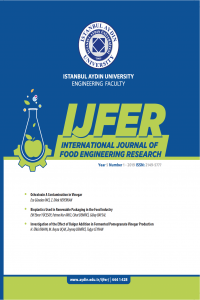Phenylketonuria Pku : Food Controlled Genetic Disease
Phenylketonuria Pku : Food Controlled Genetic Disease
Phenylketonuria PKU is an autosomal recessive inborn disorder of the metabolism that occurs due to mutations in the gene that codifies enzyme called the phenylalanine hydroxylase PAH which is responsible for converting dietary phenylalanine Phe into tyrosine Tyr in the liver. This results in persistent elevated Phe blood and tissue concentrations, with potential toxic effects, particularly for the developmental brain. Although some new therapeutic approaches have been tested in order to improve the quality of life of PKU patients as neutral amino acids, tetrahydrobiopterin, Phe ammonia lyase or gene therapy , dietary restriction throughout an individual’s lifetime is a general consensus for the current standard of care and primary treatment for PKU. Nutritional guidelines and statements vary between countries, but low protein and Phe-restricted diet are common. However, PKU patients’ individual tolerances are determinant for the treatment. The content of dietary treatment was protein substitutes Phe-free AA mixtures and a wide range of low protein products like bread, biscuits, cereals, pasta, flour, the substitutes of milk, cheese and egg.. etc. and strictly controlled amounts of natural foods, essentially fruits, vegetables and other natural foods or food products with low protein content. Medicinal food are also included in the diet, however high tyr content, the lack of some diet substitutes make them unpreferred. The aim of this review was to discuss the some concerns about the dietary treatment of PKU
Keywords:
Phenylketonuria, Diet, Phenylalanine, Tyrosine Medicinal Food,
___
- Dokoupil K, Gokmen-Ozel H, Lammardo AM, Motzfeldt K, Robert M, Rocha JC, van Rijn M, Ahring K, Bélanger-Quintana A, MacDonald A., “Optimising growth in phenylketonuria: current state of the clinical evidence base.”, Clin Nutr. vol. 31, pp.16-21, 2012.
- Bélanger-Quintana A, Burlina A, Harding CO, Muntau AC, “Up to date knowledge on different treatment strategies for phenylketonuria.”, Mol Genet Metab. Vol 104 Suppl:S, pp. 19-25, 2011.
- Belanger-Quintana A, Dokoupil K, Gokmen-Ozel H, Lammardo AM, MacDonald A, Motzfeldt K, Nowacka M, Robert M, van Rijn M, Ahring K. “Diet in phenylketonuria: a snapshot of special dietary costs and reimbursement systems in 10 international centers.”, Mol Genet Metab.,vol 105, pp 390-4, 2012
- Camp KM, Parisi MA, Acosta PB, Berry GT, Bilder DA, Blau N, Bodamer OA, Brosco JP, Brown CS, Burlina AB, et al. Phenylketonuria Scientific Review Conference: state of the science and future research needs. Mol Genet Metab. vol 112, pp 87-122, 2014.
- Pimentel FB, Alves RC, Costa AS, Torres D, Almeida MF, Oliveira MB, “Phenylketonuria: protein content and amino acids profile of dishes for phenylketonuric patients. The relevance of phenylalanine.”, Food Chem. vol 149, pp.144-50, 2014. [6] Demirkol M, Giżewska M, Giovannini M, Walter J, “Follow up of phenylketonuriapatients.”, Mol Genet Metab., vol 104 Suppl:S, pp 31-9, 2011.
- Rocha JC, Martel F, “Large neutral amino acids supplementation
- inphenylketonuric patients.”, J Inherit Metab Dis. vol 32, pp. 472-80, 2009.
- Blau N, van Spronsen FJ, Levy HL, “Phenylketonuria”, Lancet, vol 376, pp.1417-27, 2010. [9] Feillet F, Agostoni C, “Nutritional issues in treating phenylketonuria”, J Inherit Metab Dis., vol 33, pp. 659-64, 2010.
- Weetch E, Macdonald A, “The determination of phenylalanine content of foods suitable for phenylketonuria.”, J Hum Nutr Diet.,vol 19, pp. 229-36, 2006.
- ISSN: 2149-5777
- Başlangıç: 2015
- Yayıncı: İstanbul Aydın Üniversitesi
Sayıdaki Diğer Makaleler
Anti-Proliferative Effect of Rosa Agrestis on Endometrium Cancer Cells In Vitro
Mine ERGÜVEN, Sükran KÜLTÜR, Nurten ÖZSOY
Evaluation of a Real-Time PCR Multiplex Assay For Detecting Foodborne Pathogenic Bacteria
İsmail Hakkı TEKİNER, Haydar ÖZPINAR
